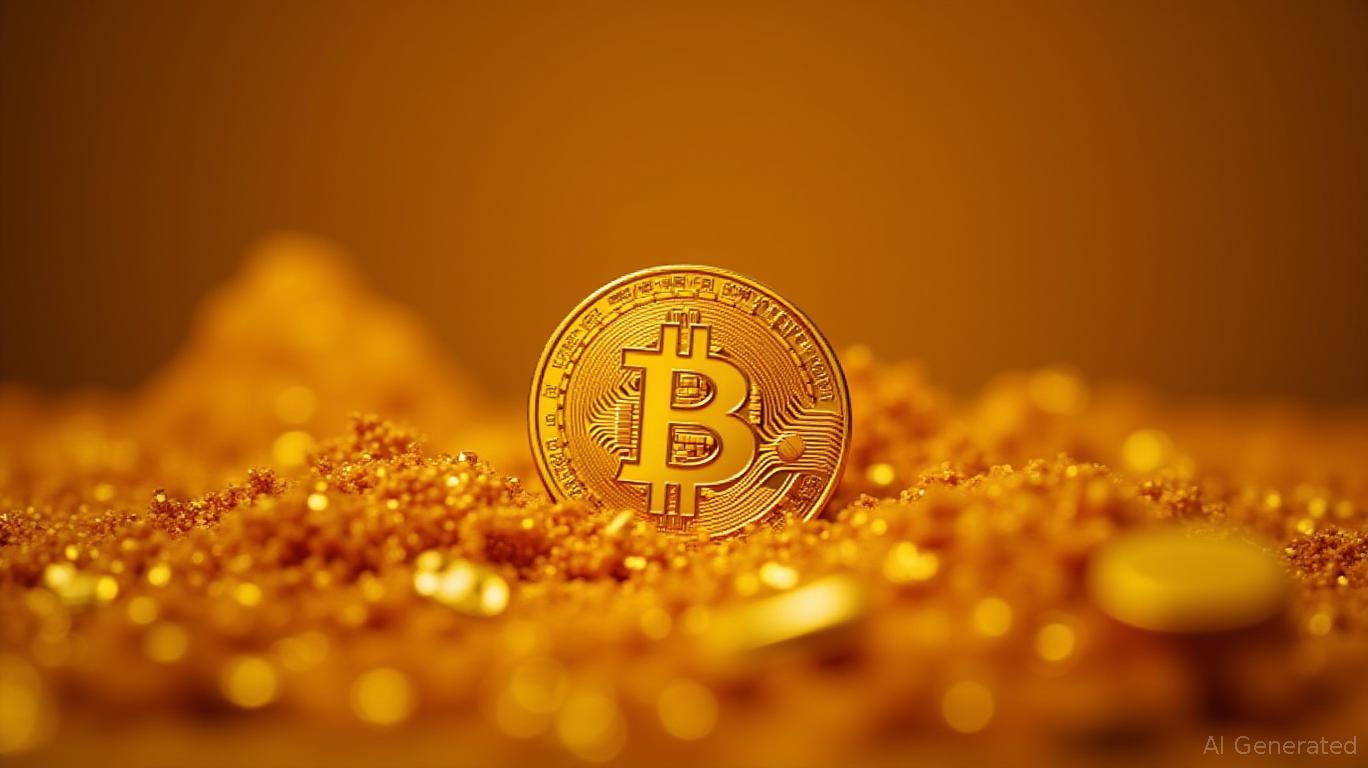Central banks are increasing their gold reserves while Bitcoin's reputation as a safe-haven asset diminishes
- Gold surged to $3,700/oz in 2025, outperforming Bitcoin as top safe haven amid geopolitical risks and dollar weakness. - Central banks added 1,000+ tons of gold, reinforcing its role against inflation and currency devaluation. - Bitcoin's 24% gain lagged gold due to volatility, equity market ties, and regulatory uncertainties. - Institutional investors shifted capital to gold as Bitcoin's safe-haven appeal waned amid macroeconomic headwinds. - Major banks project gold to hit $4,000 by mid-2026, cementing

Bitcoin’s Decline Highlights Gold’s Growing Safe Haven Appeal
In 2025, gold has soared to unprecedented levels, outperforming
The U.S. dollar’s 10% slide this year has further fueled international demand for gold. Central banks have continued to boost their gold reserves, adding over 1,000 tons for the third year in a row, cementing gold’s role as a critical reserve asset. Meanwhile, Bitcoin’s price swings have limited its effectiveness as a safe haven. Despite optimism from its fixed supply and growing institutional interest, Bitcoin’s value remains closely linked to U.S. stock markets and speculative trading, making it less reliable during periods of market stress.
Investor attitudes are evolving as well. Large asset managers and hedge funds are increasingly shifting funds from Bitcoin into gold. Noted analyst Peter Brandt points out that Bitcoin’s strong connection to riskier assets weakens its safe haven status. In contrast, gold’s consistent gains and resilience in the face of economic challenges have strengthened its reputation. With the Volatility Index (VIX) at record lows, indicating calmer equity markets, investors are gravitating toward stable assets like gold The Zero-Sum Stablecoin War: How Circle, Tether, and New … [ 5 ].
Bitcoin also faces obstacles from regulatory ambiguity and emerging competitors in the safe haven space. Expected interest rate cuts by the U.S. Federal Reserve have made holding gold more attractive, while Bitcoin’s regulatory landscape remains unclear. The emergence of tokenized money market funds, such as BlackRock’s BUIDL, provides yield-generating alternatives that could draw capital away from both stablecoins and Bitcoin’s broader market.
Looking forward, gold’s fundamental strengths seem firmly established. Leading financial institutions like UBS and Goldman Sachs predict gold could reach $3,800–$4,000 by the end of the year and $4,000 by mid-2026, driven by ongoing central bank purchases, a weaker dollar, and persistent geopolitical risks. While Bitcoin maintains a robust open interest of $60 billion, it continues to face challenges from volatility and regulatory pressures. For now, gold’s longstanding reputation as a store of value and its alignment with global economic trends secure its position as the premier safe haven asset in 2025.
Disclaimer: The content of this article solely reflects the author's opinion and does not represent the platform in any capacity. This article is not intended to serve as a reference for making investment decisions.
You may also like
CandyBomb x UAI: Trade futures to share 200,000 UAI!
New spot margin trading pair — KITE/USDT, MMT/USDT!
STABLEUSDT now launched for pre-market futures trading
The transaction fees for Bitget stock futures will be adjusted to 0.0065%